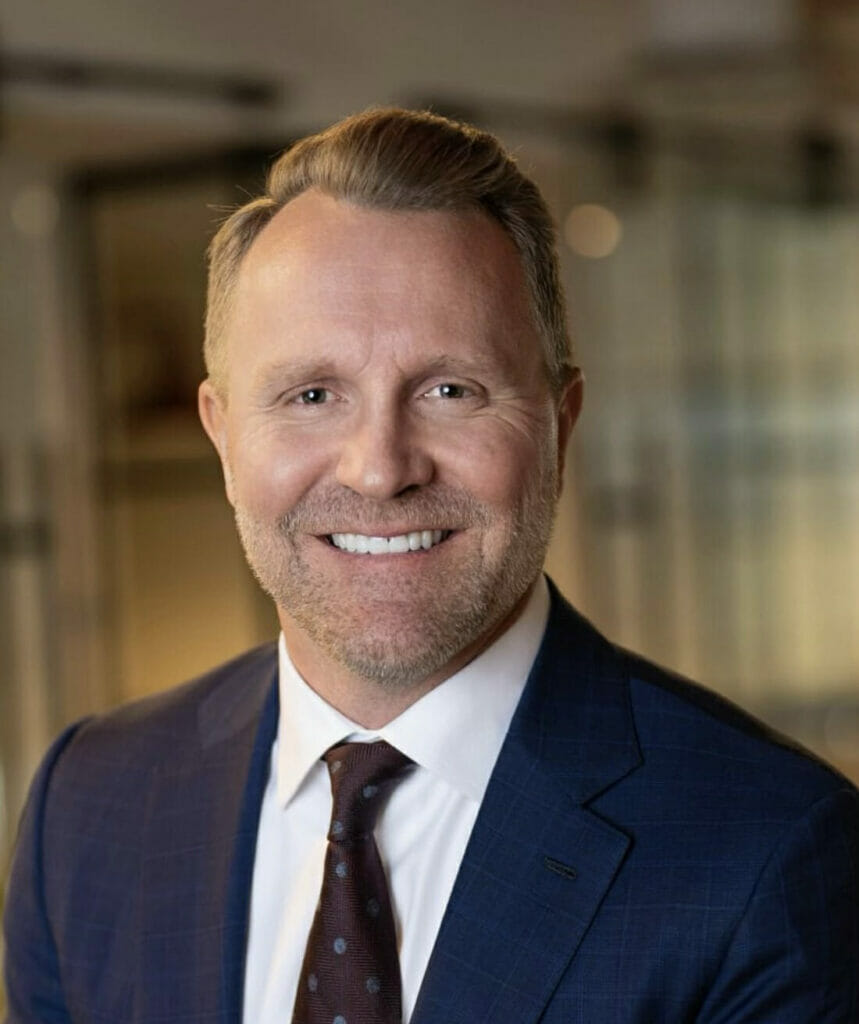
Using a model that invests in strong administrators and frees them to lead locally, Providence Group has edged itself into position as one the nation’s five largest nursing home operators over the last two years.
Having fewer dominant players in the skilled nursing sector — and room for quality improvements in many markets — will continue to fuel the chain’s growth beyond its current 177 skilled nursing facilities, said Jason Murray, CEO of Providence and PACS, the Providence Administrative Consulting Services arm.

“This notion that we can take these struggling assets, that for years, for a variety of reasons have struggled clinically, financially, this idea that we can take these distressed assets and breathe new life into them with a new care model, new leadership, and then to see the results of that over time … that is rewarding for us,” Murray told McKnight’s Long-Term Care News earlier this month.
“There’s a lot of opportunity out there for us to replicate what we’ve done year over year and with every acquisition. We will continue to grow because there are 15,000 nursing homes across the country and by my last count, the largest provider has 250 or something,” he added. “It’s very fragmented and there’s a lot of opportunity for continued growth in our sector.”
Providence Group roared onto the national stage in 2021, when it acquired Plum Healthcare Group, then California’s second-largest nursing home operator. At the time, the company reported it had picked up operations at all 58 facilities it acquired and bought the real estate for 10.
Today, Providence continues to operate a mix of its own buildings and those leased from real estate investment trusts. Most recently, its nine-state portfolio has added new facilities in Colorado and Arizona.
All of those facilities have access to back-office services and clinical support from PACS, which uses a regional model to deliver training and expertise. But Murray insists that it’s the administrators in each of those buildings who determine how much involvement they want with PACS.
In turnaround projects, Providence closely examines the ability of an existing administrator to lift a building’s performance. Regional executives can help with recruiting those more in line with the chain’s approach to becoming indispensable post-acute partners and elevating care standards.
The ‘secret sauce’
That often means grooming a new building leader through PACS’ six- to nine-month administrator-in-training program for recent college graduates or a training and support program for experienced administrators who want to transfer into the company.
Once administrators are working in the system, they are empowered to tap resources and institute local policies that make the most sense for their region and for their workers. Murray says that the decentralized model has been a major contributor to administrator turnover rates that continuously beat national averages.
Last year, he said, Providence turned over 2% of its administrators. By comparison, a major consumer group recently reported that roughly half of US nursing homes reporting administrator data to federal regulators lost at least one administrator in the previous 12 months.
“Providers need to embrace this idea that your administrators and the teams at your buildings need to be high-performing people,” Murray said. “That is our secret sauce: the ability to attract and retain the best talent not only in our industry, but I would put our talent against any industry. We have prior professional athletes, prior attorneys, prior business owners who are running nursing homes as administrators and who are part of the clinical teams.”
While the PACS team also provides legal, clinical and marketing support, it’s been the ability to help recruit that individual facilities lean on most, Murray says.
“The recruiting of staff, the training of staff and making sure we can keep our facilities staffed, that is the main driver behind our success,” Murray said, noting a relatively good turnover rate of 40% among CNAs, LPNs and RNs.
Consistency of administration leads to happier staff, and those higher staffing levels have helped keep beds open in Providence facilities even as others may have struggled. Murray said census today averages around 90% outside of new acquisitions.
Most of the group’s facilities experienced a dip of about 5% during the early COVID days, but many quickly created support systems for hospitals to anchor referrals.
“Our trajectory out of that was much quicker and steeper than some of the national averages,” Murray noted. “Over a two-quarter period, we came back close to historical census levels… We felt like we were very good partners in the markets we were in … and secondly, we worked very hard to keep our buildings staffed.”
An in-house staffing agency endeavor also helped to help normalize the cost of staffing in some markets and circumvent at least some agency price-gouging.
More growth ahead?
Moving forward, where and how Providence charts its growth largely will be dictated by recruitment potential, especially for administrators, and the ability to build up a geographic area that can pool recruiting resources and share staff as needed.
“We’ve become much more sophisticated in how we do acquisitions now. In the early days, it was kind of a finger in the wind sort of approach to see if it made sense,” Murray said. “But over time, we’ve created a scorecard that measures many of the things we’re talking about: reimbursement, that’s important; Medicaid, how is it funded in the state? We look at occupancy percentages [and] we look at the competitive profile. We also look at the regulatory environment and how much traction the local associations have. Is there any legislation that is pending that we need to consider? Those are all components to this scorecard.”
Providence-owned facilities are expected to meet certain clinical and quality metrics, and those goals are set out in a clear framework. But how administrators get there is up to them.
In taking over distressed assets, PACS works with the new administrator to understand where a given facility needs to improve and how it might get there. Yet Murray said leaders above the regional level try to stay out of the fray.
“The metrics are readily available and shared amongst our affiliates so that they can benchmark themselves and understand how they benchmark themselves against their peers, and not just our peers within our company, but also local as well as national metrics,” Murray said. “But we try to empower the administrator to make as many decisions locally as they can. The moment we try to take decisions away from the administrator is the moment we start to see things change and not for the better.”
One tool Providence Group hopes to bring to its affiliates is a more robust care continuum. As with other management decisions, determining home care and hospice partners falls to local managers. Dashboards allow some visibility into how well those partnerships are working and whether patients who need step down care get what they truly need.
But a more aligned strategy might be possible through ancillaries, which Providence currently does not own or manage.
“It is something that Providence Group is contemplating: Are there opportunities on the ancillary side to provide additional support?” Murray said. “We feel very strongly that we are as good as any provider out there in our space in doing what we do. So the idea of bringing verticals within Providence Group and bringing that same level of expertise and commitment to excellence in those verticals, … would [give us] as much touch on that patient post-acute as we can get.”
But again, Murray insisted, the decision to use those ancillary, co-owned partners would be left to in-building leaders.
“When you lose your identity, when you lose your culture, when you lose your operating model that made you successful, you’re too big,” he said. “We’re not interested in trying to become the largest provider in the country. We’re interested in looking at opportunities where we can provide that new life. As we continue to successfully do that, we will let the numbers take care of themselves.”




